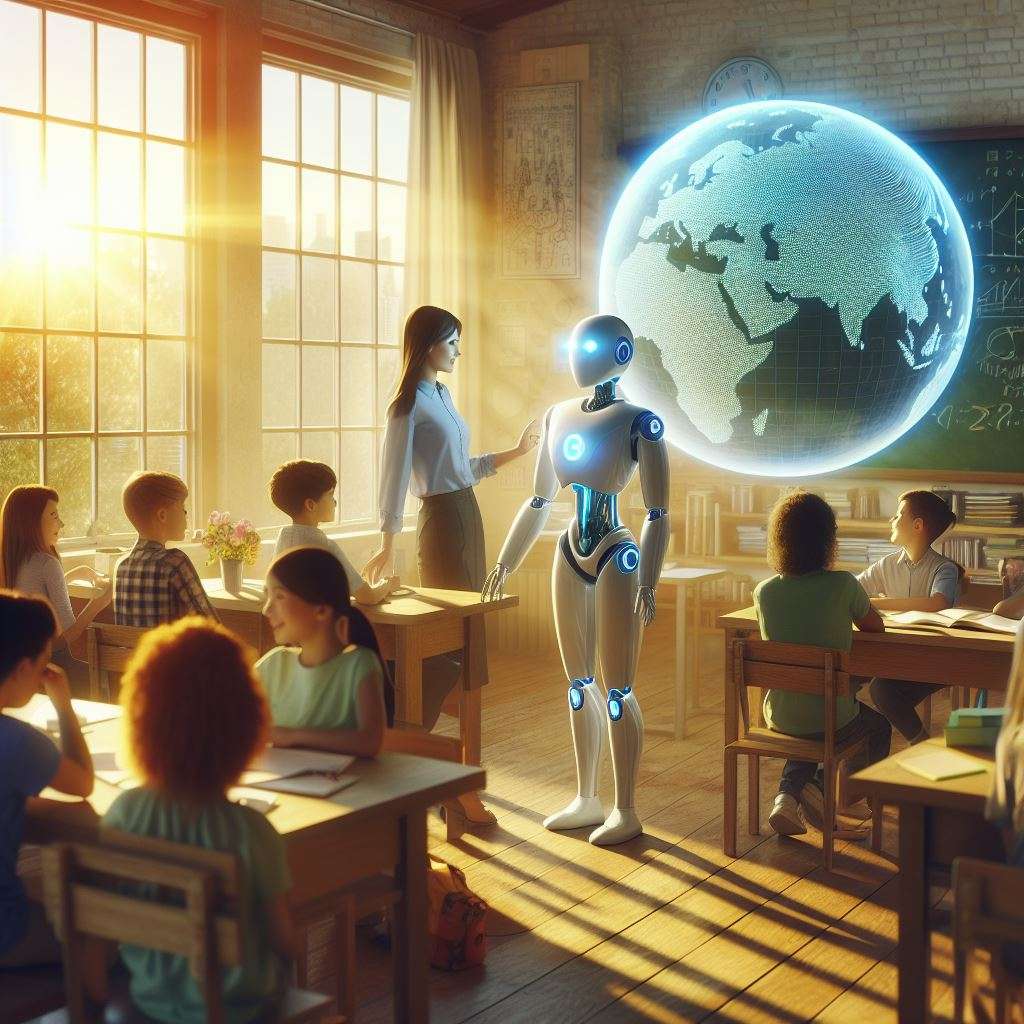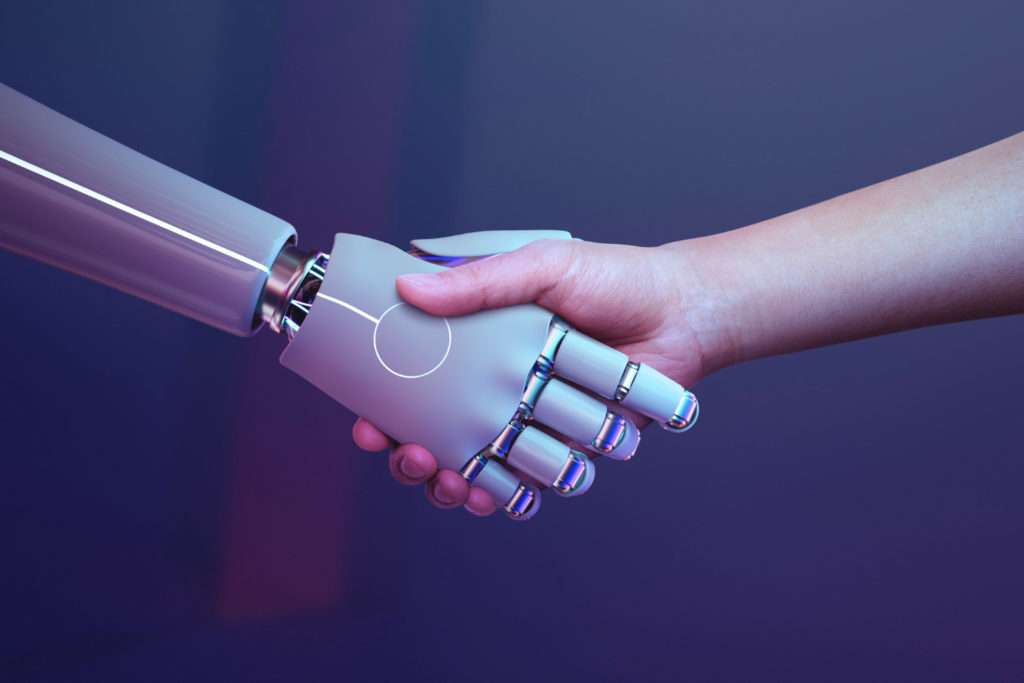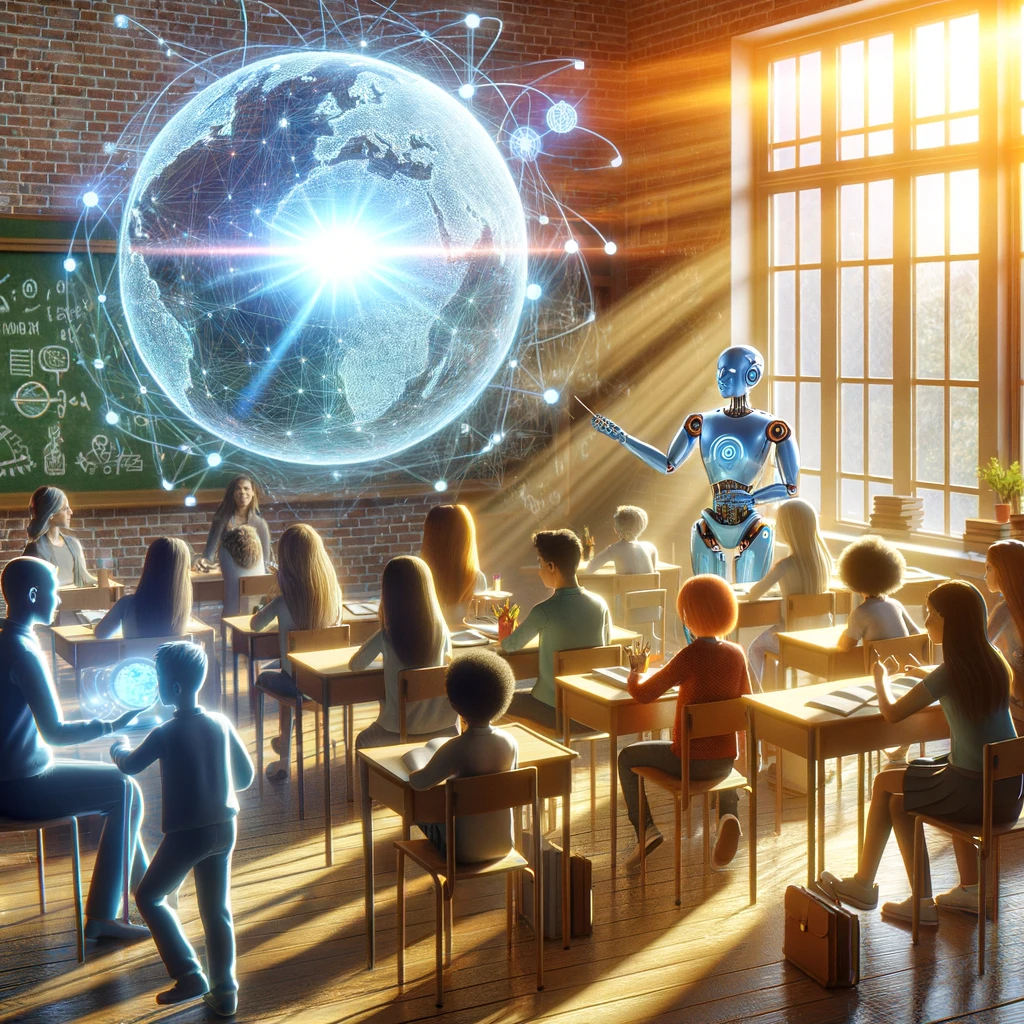Artificial intelligence (AI) is transforming various aspects of human society, including education. AI technologies are being used to enhance learning outcomes, personalize instruction, automate assessment, and increase accessibility. However, these changes also pose new challenges and opportunities for teachers, who need to adapt to the evolving educational landscape. In this article, we will examine how the integration of AI in education is reshaping the responsibilities and methods of teaching.
The Traditional Role of Teachers

Teaching is one of the oldest and most essential professions in human history. Teachers have been responsible for imparting knowledge, skills, and values to students, as well as fostering their curiosity, creativity, and critical thinking. Teachers have also played a vital role in shaping the social and cultural development of students, as well as their emotional and moral well-being. Throughout history, teachers have been revered and respected for their dedication to the betterment of society through education.
They have the power to inspire and empower the next generation, making a lasting impact on the world. As the world continues to evolve, the role of teachers remains as crucial as ever in preparing students for the challenges and opportunities of the future.
Traditionally, teachers have used various methods and tools to deliver content, such as lectures, textbooks, chalkboards, and worksheets. They have also assessed students’ learning through tests, quizzes, assignments, and feedback. Teachers have also designed curricula, planned lessons, managed classrooms, and communicated with parents and administrators.
Introduction of AI in Education
AI is the branch of computer science that aims to create machines or systems that can perform tasks that normally require human intelligence, such as reasoning, learning, and decision-making. AI technologies have been increasingly applied to education, to enhance the quality and efficiency of teaching and learning.
Some of the AI technologies currently used in education include:
- Personalized learning algorithms: These are systems that use data and analytics to tailor instruction to the individual needs, preferences, and goals of each student. For example, adaptive learning platforms can adjust the difficulty, pace, and content of lessons based on the student’s performance and feedback. Personalized learning algorithms can also provide recommendations for learning resources, activities, and interventions.
- Automated grading systems: These are systems that use natural language processing and machine learning to evaluate students’ work and provide feedback. For example, automated essay scoring systems can analyze the content, structure, and style of essays and assign scores based on predefined criteria. Automated grading systems can also provide suggestions for improvement and identify areas of weakness.
- AI tutors and assistants: These are systems that use natural language processing and dialogue systems to interact with students and provide guidance, support, and feedback. For example, AI tutors can simulate human tutors and provide hints, explanations, and feedback to students as they solve problems. AI assistants can also answer students’ questions, remind them of deadlines, and provide motivational messages.
AI technologies have had a significant impact on student learning and educational accessibility. Some of the benefits of AI in education include:
- Improved learning outcomes: AI technologies can help students learn more effectively and efficiently, by providing personalized, adaptive, and interactive instruction. AI technologies can also help students master complex and abstract concepts, by providing visualizations, simulations, and gamification. AI technologies can also help students develop higher-order skills, such as problem-solving, creativity, and collaboration, by providing challenging and engaging tasks.
- Increased educational accessibility: AI technologies can help overcome the barriers of time, space, and resources, by providing anytime, anywhere, and any device learning. AI technologies can also help reduce the gaps of opportunity, quality, and achievement, by providing affordable, scalable, and inclusive education. AI technologies can also help cater to the diverse needs and backgrounds of students, by providing multilingual, multicultural, and multi-modal education.
Changing Roles and Responsibilities
AI technologies are not meant to replace teachers, but rather to augment and complement their roles. Teachers still have a crucial role to play in education, but their responsibilities and methods are changing in the AI era.
Some of the ways that AI is supplementing traditional teaching roles include:
- Content delivery: AI technologies can help teachers deliver content more efficiently and effectively, by providing customized and interactive instruction. Teachers can use AI technologies to supplement their lectures, such as using multimedia, animations, and virtual reality. Teachers can also use AI technologies to flip their classrooms, such as assigning online videos, quizzes, and readings as homework, and using class time for discussions, projects, and experiments.
- Assessment and feedback: AI technologies can help teachers assess and provide feedback more accurately and timely, by automating the grading and evaluation of students’ work. Teachers can use AI technologies to monitor students’ progress, performance, and behavior, such as using dashboards, analytics, and alerts. Teachers can also use AI technologies to provide personalized and formative feedback, such as using adaptive testing, scaffolding, and nudging.
The integration of AI in education also requires teachers to shift from content delivery to guiding and mentoring. Teachers need to focus more on facilitating students’ learning, rather than transmitting information. Teachers need to help students develop the skills and competencies that are essential for the 21st century, such as critical thinking, creativity, communication, and collaboration. Teachers need to also foster students’ curiosity, motivation, and self-regulation, as well as their ethical and social awareness.

Additionally, teachers need to take on new responsibilities in the AI era, such as:
- Data interpretation: Teachers need to be able to interpret and use the data and insights generated by AI technologies, such as student profiles, learning analytics, and recommendations. Teachers need to be able to make informed and evidence-based decisions, as well as to provide meaningful and actionable feedback to students.
- Tech integration: Teachers need to be able to integrate and use AI technologies effectively and appropriately in their teaching and learning practices. Teachers need to be able to select, evaluate, and adapt AI technologies to suit their pedagogical goals, as well as to troubleshoot and resolve any technical issues. Teachers also need to be able to model and teach digital literacy and citizenship to students.
Challenges Faced by Teachers
The integration of AI in education also poses new challenges and difficulties for teachers, who need to adapt to the changing educational landscape. Some of the challenges faced by teachers include:
- Adapting to new technologies and teaching methods: Teachers need to be able to keep up with the rapid and constant development of AI technologies, as well as to learn how to use them effectively and efficiently. Teachers also need to be able to change their teaching methods and strategies, as well as to cope with the uncertainty and complexity of the AI era.
- Ethical considerations and privacy concerns: Teachers need to be aware of the ethical and social implications of using AI technologies in education, such as the potential bias, discrimination, and manipulation of AI systems. Teachers also need to be mindful of the privacy and security issues of using AI technologies, such as the collection, storage, and sharing of personal and sensitive data. Teachers also need to be able to educate and protect students from the potential risks and harms of AI technologies.
- Ensuring educational equity in the face of technology disparity: Teachers need to be cognizant of the digital divide and the unequal access and opportunity to AI technologies among students, especially those from disadvantaged and marginalized groups. Teachers also need to be able to address the diverse needs and backgrounds of students, as well as to ensure the inclusion and participation of all students in the AI-driven education.
Opportunities for Teachers in the AI Era
Despite the challenges and difficulties, the integration of AI in education also offers new opportunities and possibilities for teachers, who can leverage the potential and benefits of AI technologies. Some of the opportunities for teachers in the AI era include:
- Enhanced capabilities for personalized education: Teachers can use AI technologies to enhance their capabilities and capacities for providing personalized and differentiated instruction to students. Teachers can use AI technologies to tailor the content, pace, and mode of instruction to the individual needs, preferences, and goals of each student. Teachers can also use AI technologies to provide more individualized and timely support and feedback to students.
- Opportunities for professional development and learning new skills: Teachers can use AI technologies to enhance their professional development and learning new skills. Teachers can use AI technologies to access a variety of online courses, resources, and communities for their continuous learning and improvement. Teachers can also use AI technologies to learn new skills and competencies that are relevant and valuable for the AI era, such as data literacy, tech literacy, and AI literacy.
- Collaborating with AI to improve educational outcomes: Teachers can use AI technologies to collaborate with AI systems and other teachers to improve their teaching and learning practices and outcomes. Teachers can use AI technologies to augment their intelligence and creativity, as well as to complement their strengths and weaknesses. Teachers can also use AI technologies to communicate and cooperate with other teachers, as well as to share their experiences and best practices.
Preparing Teachers for an AI-Integrated Future
The integration of AI in education requires teachers to be prepared and equipped for the AI-integrated future. Teachers need to have the knowledge, skills, and attitudes that are necessary and desirable for the AI era. Some of the ways to prepare teachers for an AI-integrated future include:
- The need for training and professional development in AI technologies: Teachers need to receive adequate and appropriate training and professional development in AI technologies, both pre-service and in-service. Teachers need to learn about the basics and applications of AI technologies, as well as how to use them effectively and appropriately in their teaching and learning practices. Teachers also need to receive ongoing and updated training and support, as AI technologies evolve and change over time.
- Policy and institutional support for teachers: Teachers need to receive policy and institutional support for their adaptation and integration of AI technologies in education. Teachers need to have access to the necessary and sufficient resources, infrastructure, and equipment for using AI technologies. Teachers also need to have clear and consistent guidelines, standards, and regulations for using AI technologies, as well as to have their rights and responsibilities protected and respected.
- Developing a mindset for continuous adaptation and learning: Teachers need to develop a mindset for continuous adaptation
Case Studies and Real-World Examples
To illustrate the changing role of teachers in an era of AI, here are some case studies and real-world examples of AI integration in classrooms.
- Century Tech: Century Tech is an AI-powered learning platform that provides personalized and adaptive learning for students, as well as data-driven insights and recommendations for teachers. Century Tech uses AI to analyze students’ strengths, weaknesses, and learning styles, and to create individualized learning paths for each student. Century Tech also uses AI to provide instant feedback and support to students, as well as to monitor their progress and engagement. Century Tech helps teachers save time and effort in planning, delivering, and assessing instruction, as well as to provide more effective and targeted intervention and guidance to students. Century Tech also helps teachers improve their professional development and collaboration, by providing them with access to best practices, resources, and communities. Century Tech has been used by schools and colleges in the UK, US, and Middle East, and has shown positive results in improving student achievement, motivation, and retention .
- Squirrel AI: Squirrel AI is an AI-powered tutoring system that provides personalized and adaptive learning for students, as well as human mentors and tutors. Squirrel AI uses AI to diagnose students’ knowledge gaps and learning needs, and to create customized and dynamic learning plans for each student. Squirrel AI also uses AI to provide interactive and engaging instruction, as well as to adjust the difficulty and content of lessons based on students’ performance and feedback. Squirrel AI helps students learn more effectively and efficiently, by providing them with individualized and optimal learning experiences. Squirrel AI also helps teachers enhance their roles as mentors and tutors, by providing them with data and insights on students’ learning, as well as with tools and strategies to support and motivate students. Squirrel AI has been used by millions of students in China, and has shown positive results in improving student achievement, confidence, and interest .
- IBM Watson Education: IBM Watson Education is a suite of AI-powered solutions that provide personalized and adaptive learning for students, as well as data-driven insights and recommendations for teachers. IBM Watson Education uses AI to analyze students’ cognitive, behavioral, and emotional states, and to provide personalized and holistic learning experiences for each student. IBM Watson Education also uses AI to provide interactive and immersive instruction, as well as to provide feedback and support to students. IBM Watson Education helps teachers improve their teaching and learning practices, by providing them with data and insights on students’ learning, as well as with tools and strategies to enhance their instruction and intervention. IBM Watson Education also helps teachers improve their professional development and collaboration, by providing them with access to resources, communities, and experts. IBM Watson Education has been used by schools and colleges in the US, Canada, and Australia, and has shown positive results in improving student achievement, engagement, and well-being .
Conclusion
The integration of AI in education is reshaping the role of teachers in the 21st century. Teachers are no longer the sole providers of content and instruction, but rather the facilitators and mentors of students’ learning. Teachers need to adapt to the new technologies and methods, as well as to the new responsibilities and challenges, that AI brings to education. Teachers also need to leverage the new opportunities and possibilities, as well as to collaborate with AI systems and other teachers, that AI offers to education. Teachers play a crucial role in balancing technology with the human touch in education, as well as in preparing students for the AI-integrated future. The future of teaching with AI is not about replacing teachers, but rather about empowering and enhancing teachers.
